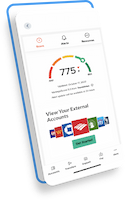Anyone who’s been on the real estate market for more than a moment or two knows that there’s plenty of lingo to learn, from technical verbiage like appraisal contingency to coded listing language, like cozy.
Once you get to the point where it’s time to take out a home loan, you’ll find there are just as many vocabulary words to learn in that realm, too. Fortunately, we’ve got your back when it comes to translation!
For example, in the process of shopping around for the perfect mortgage from the perfect lender, you may run into the distinction between qualified mortgages (QM loans) and non-qualified mortgages (non-QM loans). Basically, the difference comes down to whether or not a mortgage loan conforms to certain government-issued criteria about the structure of the loan and the assessment of the borrower’s repayment ability — but depending on your financial situation, the difference can also have important implications for your potential homeownership.
Here are the details you need to know for your own home-loan shopping journey.
What does non-QM loan stand for?
“Non-QM” is short for non-qualified mortgage, a type of loan that doesn’t conform to certain eligibility and loan structure standards set out by the federal government. Long story short: it’s a type of mortgage loan that can make it more possible for certain borrowers to get qualified.
In order to fully understand what a non-qualified mortgage is, however, we should first dive into qualified mortgages: what they are and why they exist in the first place.
What is a qualified mortgage?
A qualified mortgage is a home loan that meets the standards and restrictions set out by the Dodd-Frank Wall Street Reform and Consumer Protection Act, a law that was passed in 2010. If that timing seems conspicuous, it should: the Dodd-Frank Act was a direct result of the financial crisis in 2008, which largely revolved around subprime mortgage lending.
Without getting seriously into the weeds, the crisis revealed that aspects of borrower creditworthiness needed to be reassessed and standardized, and also that certain types of high-risk mortgage features needed to be done away with. Thus, the government spelled out certain restrictions in order to increase the likelihood of mortgages being repaid. Home loans that meet these restrictions, which are supervised by the Consumer Financial Protection Bureau or CFPB, are known as qualified mortgages.
Some of these requirements include1:
- The loan doesn’t include especially risky features, like negative amortization, interest-only, or balloon loan structures — all of these offer the borrower lower monthly payments up front, which can lead to trouble later on in the loan’s lifetime
- No excessive fees — upfront costs and points must be less than or equal to 3% of the loan amount, except for loans of less than $100,000
Additionally, lenders offering qualified loans must gather a variety of financial information in order to assess and estimate your ability to repay the loan. This usually includes income verification, a credit check, confirmation of employment history, and more. You may be required to offer bank statements, tax returns, and other statements as part of the underwriting process.
What is a non-qualified mortgage, or non-QM loan?
Non-qualified mortgages, or non-QM loans, do not meet some or all of the requirements mentioned above. And while that may make these loans riskier for lenders, it also opens up the possibility of acquiring a mortgage to a greater number of potential borrowers.
For example, let’s take the requirement of a maximum debt-to-income ratio of 43%. Debt-to-income ratios are calculated by adding up all of a borrower’s monthly debt payments and dividing it by their gross income. The calculation also includes housing costs, such as rent. Given the costs of keeping a roof over one’s head, even otherwise qualified borrowers with great credit and high incomes could be foiled by the DTI rule if only qualified mortgages were available.
Non-QM loans may also make mortgages more available to self-employed borrowers, borrowers whose income fluctuates on a monthly basis, and those with imperfect credit histories or past foreclosures.
Which borrowers benefit most from non-QM loans?
Non-QM loans can make it possible for non-traditional income earners to qualify for mortgage loans. While the lender may still assess your financial markers, such as income and DTI, you may still be able to qualify for a non-QM loan whose structure and/or requirements don’t quite meet the standards set out by the government.
Non-QM loans can be especially helpful for borrowers who:
- Have higher DTI ratios, but can still afford to pay a mortgage
- Don’t have the specific documentation required
by most traditional mortgage lenders (and are thus in need of a lite-doc
mortgage) - Borrowers looking for interest-only mortgage loans, which can be useful for those looking to quickly flip a house or otherwise don’t plan to keep the property for a long period of time.
Is a non-QM loan right for me?
Although non-QM loans can come across as risky or otherwise less desirable than qualified mortgage loans, if you’re a would-be homebuyer who’s unable to qualify for a qualified loan, a non-qualified mortgage might be exactly what you need.
There are many well-qualified borrowers with the ability to repay a mortgage loan that might not be able to meet the strict standards set out by qualified loans. If you’re self-employed, a small business owner, or someone who works in the gig economy, you’re likely subject to income fluctuations that would make qualifying for a QM loan difficult or impossible, even though you do have the money, on a holistic scale, to repay the loan.
Non-QM loans lower the barrier to entry, which could help you score the keys to your new place even if you’re a non-traditional earner or otherwise outside of the limited scope of conventional loans and qualified mortgage lending.
And although these loans are riskier to lenders, riskier doesn’t necessarily mean worse: according to data found by CoreLogic2, non-QM borrowers actually had better credit scores than qualified mortgage borrowers, though their DTI ratios were also higher.
It is important to understand, however, that non-QM loan programs do generally come with higher interest rates than their qualified counterparts. You may also be required to put down a higher down payment on the purchase — the average is over 20%, according to the Washington Post3, as opposed to a starting down payment of 3.5% for FHA loans.
Which lenders offer non-QM loans?
Now for the tricky part! Not every lender offers non-QM loans, so finding a loan provider can be a bit of a challenge for non-traditional borrowers. However, these lenders do exist, so it’s worth asking the financial institutions you’re already working with or considering what their loan qualification process is like.
Here at Quontic, finding ways to match qualified but underserved borrowers to the financial support they need is our guiding passion. We’re one of only 3% of banks in the country with a CDFI, or Community Development Financial Institution certification.
Through our Non-Traditional Loan,4 which are specifically structured to help non-traditional earners gain access to prime mortgage lending, we help lower-income and underbanked Americans. While we do assess a borrower’s overall credit history and financial profile, we don’t have the same kind of standardized income and tax verification process that many traditional home lenders do. These loans are specifically geared to help qualified self-employed individuals, immigrants, foreign nationals and others with difficult-to-document income get the mortgage loans they need and deserve, whether you’re a first-time homeowner or looking to refinance an existing mortgage.
How can I apply for a non-QM loan?
If a non-QM loan sounds like the right option for your financial situation, Quontic has a number of unique options within our Non-Traditional Loan program. Learn more by speaking to one of our mortgage specialists and see if you can get pre-qualified today.
1Information per the Consumer Financial Protection Bureau, accessed September 2021.
2Information per CoreLogic article “Characteristics of Today’s Non-Qualified Mortgages” by Archana Pradhan, March 18, 2019.
3Information per Washington Post article “Good news for self-employed borrowers: Nonqualifying mortgages are staging a comeback” by Kathy Orton, January 4, 2021.
4All lending products are subject to approval. Rates, program terms & conditions are subject to change without notice. Not all products are available in all states or for all amounts. This does not represent an offer to enter into a loan agreement. Other requirements, restrictions & limitations apply. Information is accurate as of August 4, 2022 & is subject to change without notice.









